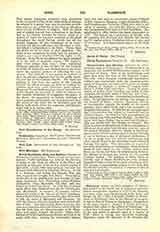

Civitavecchia and Corneto, Diocese of (CENTUMCELLARUM ET CORNETANA).—Civitavecchia is an important and fortified Mediterranean seaport, in the province of Rome. Part of its fortifications and piers date from the time of the Emperor Trajan. The city, which enjoyed considerable importance, military and commercial, under the temporal sovereignty of the popes, was improved to great advantage by Eugene IV, Nicholas V, Julius II, Gregory XIII, Sixtus V, Urban VIII, and others. During the persecution of Gallus, Pope Cornelius was exiled to Centumcellae, the ancient name of this city (Lib. Pont., ed., Duchesne, I,150-52). Catacombs have been found here. In 314 Epictetus, its bishop, was present at the Council of Arles. Another Epictetus, Bishop of Centumcellae towards the middle of the fourth century, was a rabid Arian and a bad counsellor of Emperor Constantius. In 1086 the see was suppressed and Civitavecchia was united to Toscanella and in 1193 to Viterbo. In 1825 Leo XII reestablished the see, uniting it to Porto and Santa Rufina. In 1854 the union with Santa Rufina was severed and Civitavecchia was united with the Diocese of Corneto. The latter is a town in the province of Rome, situated on a hill about three miles from the sea, near the ruins of the ancient Tarquinii, once the capital of the Etruscans or rather of the southern part of ancient Etruria; it was in its time a seat of advanced civilization, if we are to judge from the painted earthenware and other objects found in the numerous tombs scattered through this region. The catacombs are a proof of the early introduction of Christianity, which however seems to have made its way thither, neither from Rome nor by sea, but from the neighboring Bolsena. No bishops of Corneto are known for the ancient Christian period. The basilicas of Santa Maria in Castello and of Santa Restituta are very ancient. Cappelletti believes that it was made a diocese in 1435. The diocese is immediately subject to the Holy See, has 29,700 Catholics, 12 parishes, 7 religious houses of men and 7 of women.
U. BENIGNI

